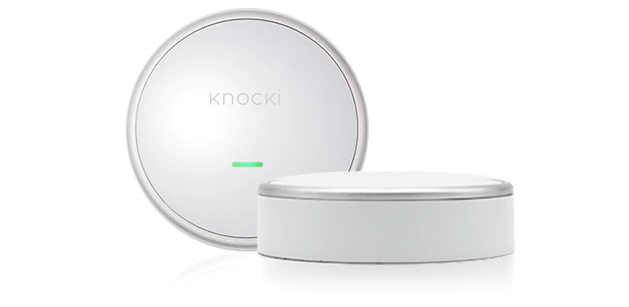The Premise. Since video games became a cultural phenomenon, gamers and developers alike have craved ways to become a part of the game. After 20 years of stalling and failing to launch, virtual reality headsets are on the brink of becoming the next big thing in gaming. Now it’s time to gear up with the weapons to survive the games.
The Product. The Trinity Magnum is a motion controller designed to handle and feel like a gun, the kind of which one would find in any first-person shooter. With one- or two-handed grips, a trigger, two joysticks, and four buttons, the Magnum is intuitively compatible with a number of titles regardless of genre. With a 9-axis IMU and optical tracking using a compatible camera, 1:1 motion is offered with no drift and maximum accuracy.
The Pitch. The launch video for Trinity Magnum is exactly what those who follow the gaming industry should expect. With hands-on footage from Game Developer’s Conference and testimonials from developers and users alike, it’s easy to get excited by what’s on display. The campaign itself goes into more detail regarding compatibility and functionality, as well as existing partnerships for the device. TrinityVR are shooting for a goal of $60,000 to assemble and test the prototype before finalizing and shipping the Magnum.
The Perks. A Magnum Developer Kit can be scored for $80 and will be out by the end of the year complete with SDK and the gun itself, though a compatible camera will need to be picked up elsewhere. Higher tiers simply offer multiple Trinity Magnums.
The Potential. As is pointed out in the pitch video, virtual reality gaming is all about immersion, and a VR headset is just half the battle. The technology behind the Trinity Magnum should make it an incredibly powerful tool in bringing games to life. Unfortunately, some of that realism might be lost through the current prototype design, which looks a bit like a Wii Zapper and a PlayStation Move controller had a baby as opposed to resembling a gun. The other issue this campaign might run into is focusing only on backers receiving development kits: which is great news for designers, but more than the average gamer needs. Add to this that an OpenCV camera is required, and there’s something that’s a really great piece of technology, but maybe a little too rough around the edges to really sell VR equipment.
 Switch Bot is a small robotic device that attaches to other devices throughout the home or office and can wirelessly control all their switches and buttons. Control can be done while at the location or remotely using a smartphone or smartwatch.
Switch Bot is a small robotic device that attaches to other devices throughout the home or office and can wirelessly control all their switches and buttons. Control can be done while at the location or remotely using a smartphone or smartwatch.

 The main problem with controlling music and GPS navigation in one’s car through traditional remote control devices is that it can be a dangerous distraction.
The main problem with controlling music and GPS navigation in one’s car through traditional remote control devices is that it can be a dangerous distraction.
 It’s 3 a.m. and it would be nice to turn the TV and lights off without getting out of bed.
It’s 3 a.m. and it would be nice to turn the TV and lights off without getting out of bed. Knocki
Knocki
 Mobile games have become an unignorable aspect of the gaming landscape. Players have access to thousands of games wherever they are, but the one complaint most people will always have is control.
Mobile games have become an unignorable aspect of the gaming landscape. Players have access to thousands of games wherever they are, but the one complaint most people will always have is control.